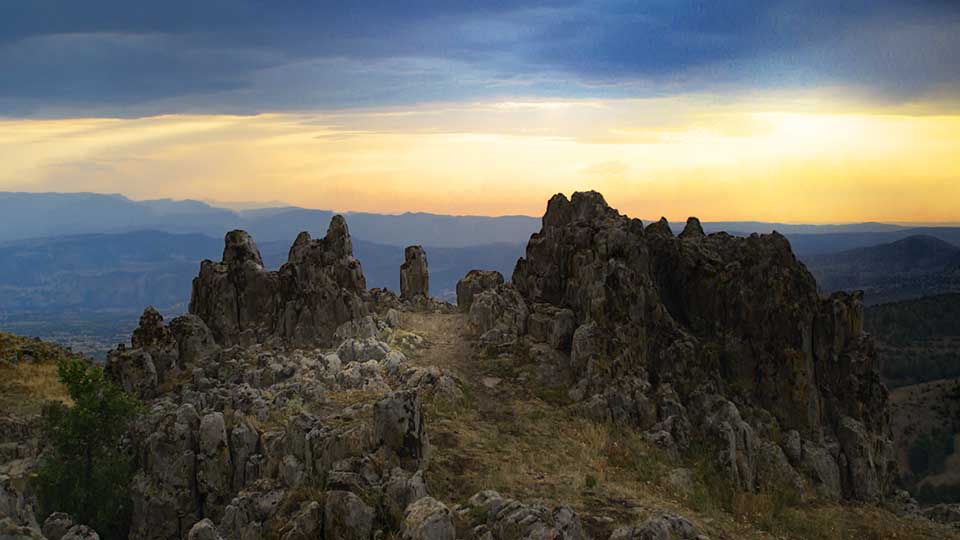Megalithic Observatory Kokino

The wider Kokino archaeological site covers about 30 hectares. The oldest archaeological finds date from about the 19th century BC, corresponding to the early European Bronze Age. It shows signs of occupation for the period from the 19th to the 7th centuries BC. Finds from the Middle Bronze Age (c. 16th to 14th centuries BC) are the most numerous (mainly ceramic vessels, stone-mills, a few molds, and a pendant). An agglomeration from the Iron age was discovered in 2009. The remains of vessels filled with offerings were found deposited in cracks in the rocks, which gave rise to the interpretation of the site as a “holy mountain”.
The Kokino “megalithic observatory” should be distinguished from the wider Kokino archaeological site. The claimed archaeoastronomical site has a combined area of about 5000 square meters and consists of two platforms with an elevation difference of 19 meters. The claim of the site representing an astronomical observatory was made by Stankovski and by Gjore Cenev in 2002. According to this interpretation, the site includes special stone markers used to track the movement of the Sun and Moon on the eastern horizon. The observatory used the method of stationary observation, marking positions of the Sun at the winter and summer solstice, as well as the equinox. Four stone seats or “thrones” are placed in a row on the lower platform. According to Cenev, a stone block with a marking on the upper platform marks the direction of sunrise on summer solstice when viewed from one of the seats. Kokino was briefly mentioned in a poster made by NASA’s “Sun-Earth Connection Education Forum” in 2005, although in a recent survey of ancient “observatories”, the Kokino site was described as “a particularly problematic case”
The archaeological site and megalithic observatory Kokino are located approximately 30km from the town of Kumanovo, close to the Border with Serbia. The site was discovered in 2001 and has aroused significant domestic and international interest since. Names side by side with ancient observatories like Stonehenge, Abu Simbel, Angkor Wat, Machu Picchu it is one of the sites that is a must-visit when in Macedonia. At the site, remnants of a culture flourishing in the period from 19th to 11th centuries B.C (Bronze Age) have been found. A mold for casting bronze axes, a pendant, and numerous ceramic artefacts have been found deposited in cracks of the rocks.
The megalithic observatory consists of two platforms, where special stone markers were discovered. It is assumed that these were used to track the movement of the Sun and Moon on the eastern horizon.
